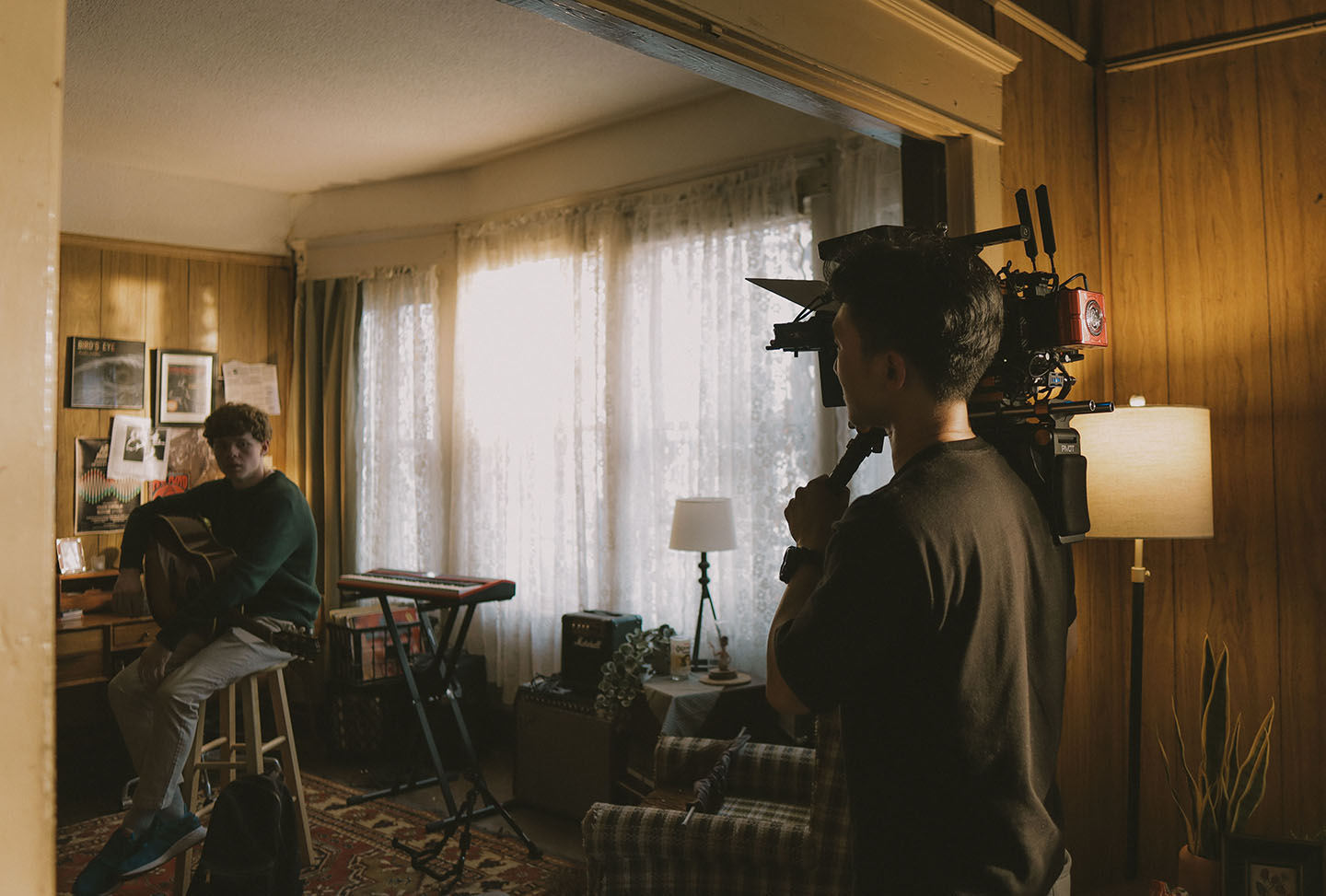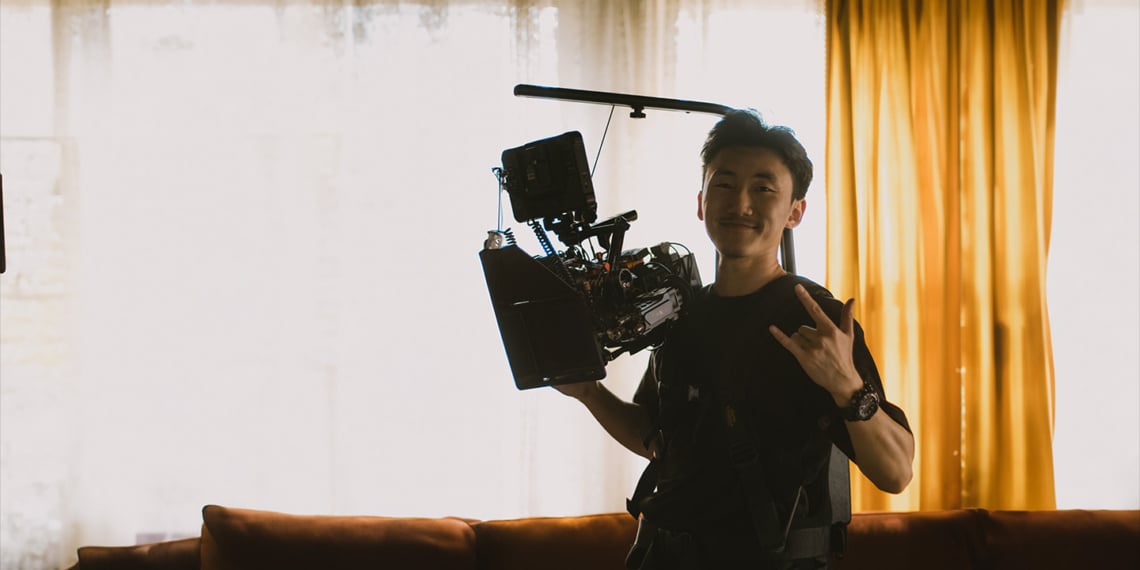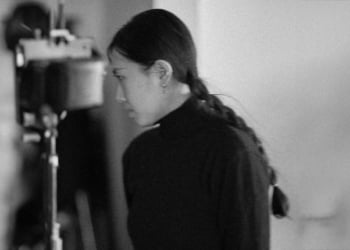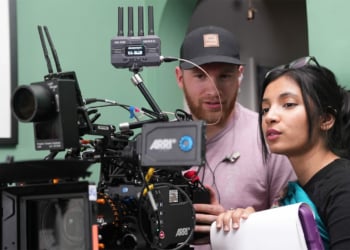In the vibrant world of cinematography, few stories are as compelling as that of Chris Wu. From the streets of Chengdu, China, to the glittering lights of Hollywood, Wu’s journey is a testament to the power of passion and perseverance. As a cinematographer and steadicam operator, Wu has quickly made a name for himself in the competitive Los Angeles film scene, bringing a unique blend of artistic sensibility and technical prowess to his work. In this exclusive interview with Indie Shorts Mag, Wu opens up about his transition from art photography to filmmaking, his award-winning music video “Lost All Care,” and how he’s carving out his space in the industry.
Indie Shorts Mag: Can you tell us about your journey from growing up in Chengdu, China to becoming a cinematographer in the United States?
Chris Wu: I grew up in a small town in China then moved to Chengdu when I was 12 years old. I never thought I could be working in the showbiz one day, not alone in China but in Hollywood. In 2016 I came to the US for College. I started as an economics student at Syracuse University. It never came to me that I had talent in filmmaking until one day I started taking an analogue photography class on campus. It was the first time I felt a strong connection with cameras and the desire to tell a story. Even though I was obsessed with old-school film cameras, I soon found out photography isn’t always about storytelling. So I figured filmmaking would be a better fit for me. I first started by joining a film fraternity called Delta Kappa Alpha on campus. That way I got to meet a lot of film students on campus and started to get on set as a behind-the-scenes photographer. Meanwhile, I used all the knowledge I learned from my film friends and started making my own short film and used it to apply for film school.
In 2020, in the midst of the pandemic, I graduated from college then got accepted by Savannah College of Art and Design’s MFA film program, and officially started my journey as a filmmaker. Due to my photography background, I naturally found myself behind the camera and started specializing in cinematography. It was the best decision I ever made in life! I was able to get my hands on all types of professional film cameras, lenses, and lighting equipment which was a game changer for me. Besides the camera side of knowledge, I also learned all kinds of filmmaking skills in school including script writing, producing, directing, editing, and sound design. This fundamentally changed my understanding of filmmaking. I started to think as an editor and sound designer when I was shooting on set rather than only relying on visual language to tell a story.
After graduation in 2023, I decided to move to LA the second I got out of school. Hollywood had always been a sacred place for every filmmaker. I guess I was just sick of hearing people telling stories about LA, so I decided to see it for myself. During the first few months, I was just running around in LA like a crazy tourist taking random photos on the street with my Nikon F3. I was obsessed with the colorful streets and neon lights in LA.
One day at a techno crane and Steadicam event, I got to meet with a very experienced Steadicam operator Greg Smith. He was kind enough to let me try on his rig and show me some basic techniques about steadicam. I was overwhelmed by the amount of new technology and well-known filmmakers I saw on that day. That was the first day felt the magic of “Hollywood”. So I decided to do something about my career and started to get into steadicam operation.

Indie Shorts Mag: How did your background in art photography at Syracuse University influence your approach to cinematography?
Chris Wu: As a photographer, I was more sensitive to the color and texture of things in frame. That helped me develop attention to detail when it comes to filmmaking.
Indie Shorts Mag: Your music video “Lost All Care” for Emde has garnered several awards. What was your visual approach to translating the theme of bipolar disorder into cinematography?
Chris Wu: Based on my research about the symptoms of bipolar disorder online. It mainly involves the depressive episode and manic episode which results in polar opposite moods. I decided to show this by using the transition from high-key lighting to low-key lighting at the beginning to symbolize those two stages.
Emde also told me that bilopar disorder is treatable by medication but that often cause her to not be able to feel any joy or emotion in life like traped within a wall. This is reflected in the party scene where she seems to be disconnected from everyone on screen. The scene where she was talking on the phone then the camera pull out to reveal the wall and a picture frame to show that she felt trapped and helpless since no one was able to help her get out of this stage.
Indie Shorts Mag: Could you walk us through your creative process for “Lost All Care,” from concept to execution?
Chris Wu: I mostly took inspiration from HBO TV show Euphoria. It is a beautiful show that touched on the mental health of high school kids in the US. The protagonist, Rue, also has Bipolar disorder which makes it the perfect example of how to translate the theme of mental disorder into visual language. I used the low key lighting and colorful set designs to set the tone, then shot everything on steadicam and dolly to keep the camera moving.
Indie Shorts Mag: As a steadicam operator in Los Angeles, how do you navigate the competitive landscape and continue to improve your skills?
Chris Wu: There are a lot of good operators in LA, but that doesn’t necessarily make them my competitors. The pool is big enough for everyone to catch fish. What really matters is the name and impression you build out there. I often practice steadicam with other operators. Each week we would invite new operators to join the practice. That way we can share our techniques and growth together as steadicam operators.
Indie Shorts Mag: Can you share more about your experience working with Greg Smith and the community of steadicam operators you’ve built?
Chris Wu: Greg is the most friendly guy I have ever met in life. He was the person who got me into steadicam and introduced me to some of the young operators in LA. We quickly connected and started to practice steadicam at Tiffen Technical Center each week. I would often write a script based on my favorite movie scenes and practice steadicam based on that. People loved it and started to join in! We started from a group of 4 people to more than 20 operators in the group by introducing new people each week.
Indie Shorts Mag: In “The Guitarist,” the review mentions your color grading creating an “aura of stifled life.” How do you use color to enhance storytelling in your work?
Chris Wu: The production design and lens choice contributed to the look of the Guitarist. We used a lot of old furnitures from the 80s to give the film a retro and washed out vibe. I picked a set of anamorphic lenses that offer very quirky flares, distortion, and soft images to give the film a less realistic feel, almost like a memory.
Indie Shorts Mag: Your work on “Lost All Care” was described as having “slick, glossy visuals.” How do you balance stylization with the emotional content of a project?
Chris Wu: Stylization grabs audience’s attention and color triggers feeling and emotions.
Indie Shorts Mag: How do you approach the challenge of visually representing internal struggles, as you did in “Lost All Care”?
Chris Wu: I used a lot of symbolization to represent the feeling. The wall and the picture frame represents the feeling of being trapped. Emde walking with a suite case alone on a long dark road represents the feeling of helpless. The transition from high key lighting to low key lighting at the begining represents the manic episode and depresive episode of bipolar disorder.
Indie Shorts Mag: As both a cinematographer and steadicam operator, how do you see these roles complementing each other in your career?
Chris Wu: Being a cinematographer often means you are operating the camera on set. Steadicam is a great way to bring energy and camera movements into the music video. A good cinematographer needs to know how to operate a camera to design shots. Years of Steadicam practice teach me which shots are best suitable for which situations.
As our conversation with Chris Wu comes to a close, it’s clear that his journey is far from over. With a keen eye for visual storytelling, a dedication to his craft, and a collaborative spirit, Wu is poised to make significant contributions to the world of cinematography. His ability to balance stylization with emotional depth, coupled with his technical skills as a steadicam operator, sets him apart in a crowded field. As Wu continues to navigate the complexities of Hollywood, one thing is certain: his unique perspective and unwavering passion will continue to shape the visual landscape of film and music videos for years to come. We at Indie Shorts Mag look forward to seeing what Chris Wu captures through his lens next.
















